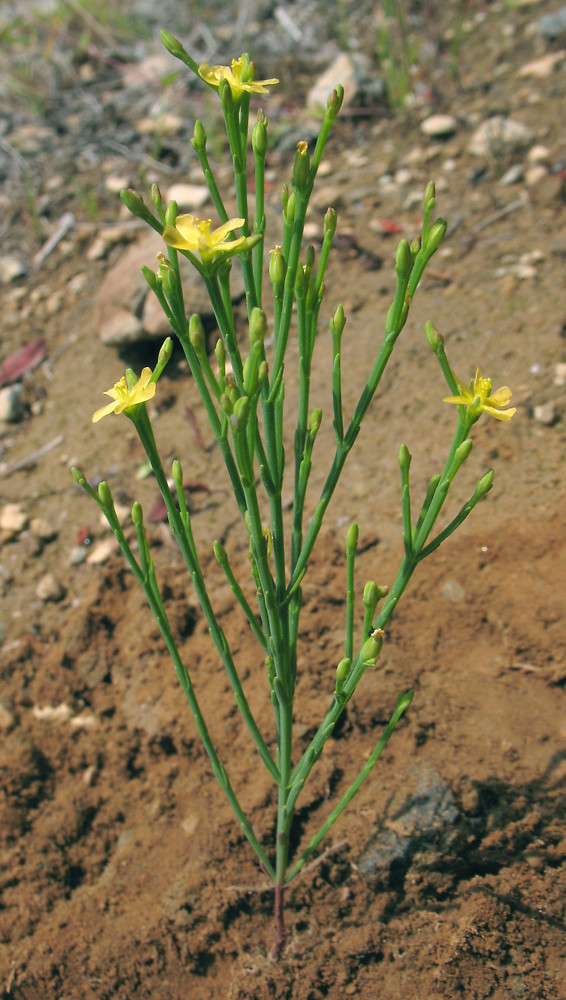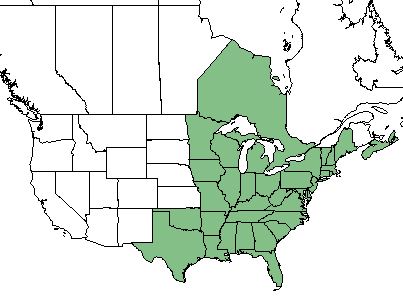Hypericum gentianoides
Common name: orangegrass [1], pineweed [2]
| Hypericum gentianoides | |
|---|---|

| |
| Photo by Marilee Lovit at the GoBotany Database | |
| Scientific classification | |
| Kingdom: | Plantae |
| Division: | Magnoliophyta - Flowering plants |
| Class: | Magnoliopsida - Dicots |
| Order: | Theales |
| Family: | Clusiaceae |
| Genus: | Hypericum gentianoides |
| Species: | H. gentianoides |
| Binomial name | |
| Hypericum gentianoides L | |

| |
| Natural range of Hypericum gentianoides from USDA NRCS Plants Database. | |
Contents
Taxonomic Notes
Synonyms: Sarothra gentianoides Linnaeus
Varieties: none
Description
H. gentianoides is an annual forb/herb of the Clusiaceae family native to North America and Canada. [1]
Distribution
H. gentianoides is found in the eastern half of the United States, as well as the Ontario region of Canada.[1] More specifically, it is distributed from Maine and Ontario west to Minnesota, and south to southern Florida and Texas.[2]
Ecology
Habitat
H. gentianoides proliferates in fields, rock outcrops, woodland borders, eroding areas, pond margins, and flatwoods. [2] Specimens have been collected from loamy loose sand, wet pine flatwoods, longleaf pine depression, and sandhills. [3] H. gentianoides responds negatively towards soil disturbance in historically forest longleaf pine communities in South Carolina.[4] It is listed by the USDA Natural Resources Conservation Service as a facultative upland species, where it most often occurs in non-wetland habitats but can also occasionally be found in wetland habitats as well.[1]
Phenology
Generally, H. gentianoides flowers from July until October.[2] It has been observed flowering in May through July and September. [5]
Seed dispersal
This species is thought to be dispersed by gravity. [6]
Fire ecology
H. gentianoides is not fire resistant, and has no fire tolerance. [1]
Conservation and Management
H. gentianoides is listed as endangered by the Iowa Department of Natural Resources Parks, Recreation, and Preserves Division. [1]
Cultivation and restoration
Photo Gallery
References and notes
- ↑ 1.0 1.1 1.2 1.3 1.4 1.5 USDA Plant Database https://plants.usda.gov/core/profile?symbol=HYGE
- ↑ 2.0 2.1 2.2 2.3 Weakley, A. S. (2015). Flora of the Southern and Mid-Atlantic States. Chapel Hill, NC, University of North Carolina Herbarium.
- ↑ URL: http://herbarium.bio.fsu.edu. Last accessed: June 2018. Collectors: Loran C. Anderson, Leon Neel, Andre Clewell, R.F. Doren, R.K. Godfrey, Cecil Slaughter, Wilson Baker, Ann Johnson, John Nelson, Keith Bradley. States and counties: South Carolina (Dillon) Florida (Bay, Flagler, Duval, Leon, Wakulla, Franklin) Georgia (Baker, Thomas)
- ↑ Brudvig, L.A. and E.I. Damchen. (2011). Land-use history, historical connectivity, and land management interact to determine longleaf pine woodland understory richness and composition. Ecography 34: 257-266.
- ↑ Nelson, G. PanFlora: Plant data for the eastern United States with emphasis on the Southeastern Coastal Plains, Florida, and the Florida Panhandle. www.gilnelson.com/PanFlora/ Accessed: 22 MAY 2018
- ↑ Kirkman, L. Katherine. Unpublished database of seed dispersal mode of plants found in Coastal Plain longleaf pine-grasslands of the Jones Ecological Research Center, Georgia.